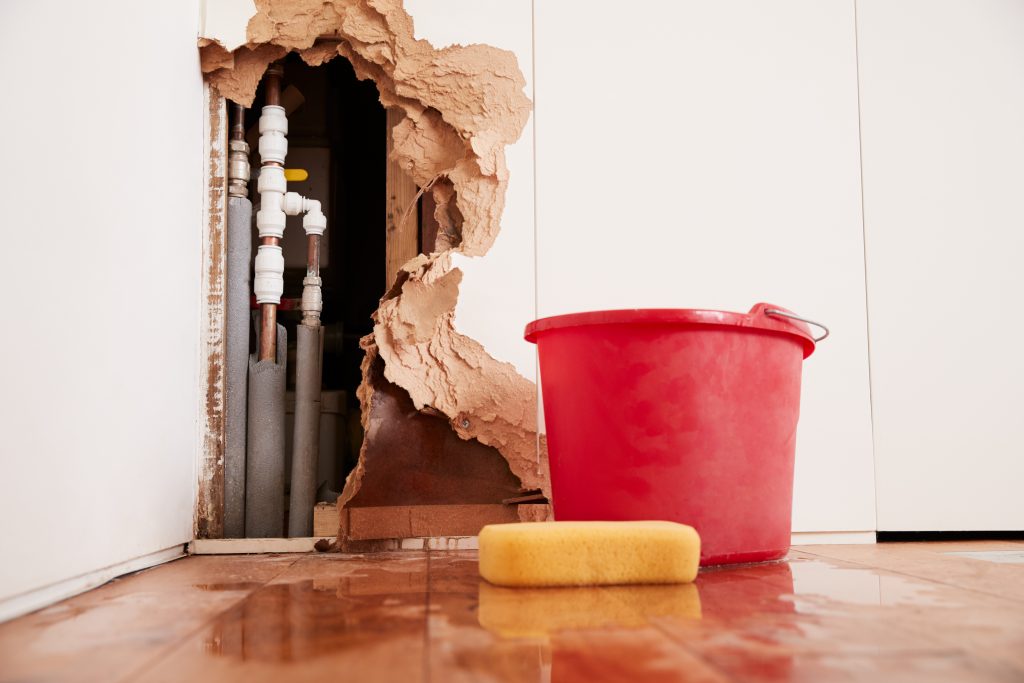Detecting Hidden Water Line Leaks: 6 Smart Methods
Detecting Hidden Water Line Leaks: 6 Smart Methods
Blog Article
Listed here below you will find lots of sound additional info concerning Hacks to detect leaks.

Early discovery of leaking water lines can alleviate a potential catastrophe. Besides conserving you cash, it will certainly lessen the stress and disappointment. The minute you find a leak, calling your plumber for fixings is the best option. Nonetheless, some tiny water leaks might not show up. Here are some hacks that assist if you can not detect it with your nude eyes.
1. Examine the Water Meter
Examining it is a proven means that assists you find leaks. If it moves, that shows a fast-moving leakage. This indicates you might have a sluggish leak that could also be below ground.
2. Inspect Water Consumption
Examine your water expenses and track your water intake. As the one paying it, you need to observe if there are any type of inconsistencies. If you spot sudden changes, regardless of your consumption being the same, it implies that you have leaks in your plumbing system. Bear in mind, your water costs must fall under the same array on a monthly basis. An abrupt spike in your expense indicates a fast-moving leakage.
On the other hand, a stable rise each month, despite having the exact same habits, reveals you have a slow leakage that's also gradually intensifying. Call a plumber to thoroughly inspect your residential or commercial property, especially if you really feel a warm location on your floor with piping below.
3. Do a Food Coloring Test
When it comes to water intake, 30% comes from toilets. If the shade somehow infiltrates your dish during that time without flushing, there's a leak in between the tank as well as dish.
4. Asses Exterior Lines
Don't fail to remember to examine your outdoor water lines as well. Should water leak out of the link, you have a loosened rubber gasket. One tiny leakage can waste bunches of water and surge your water expense.
5. Evaluate and Examine the Scenario
Homeowners ought to make it a behavior to examine under the sink counters as well as even inside cabinets for any type of bad odor or mold growth. These two warnings indicate a leak so prompt focus is called for. Doing regular evaluations, even bi-annually, can save you from a significant issue.
If you understand your home is already old, keep a careful eye on your heating systems, pipes, pipes etc. Look for discolorations and compromising as many pipelines as well as home appliances have a life span. They will certainly also naturally deteriorate as a result of deterioration. If you think dripping water lines in your plumbing system, don't wait for it to intensify. Call a professional plumber today so you don't wind up with a horrible mess in your home.
Early detection of dripping water lines can reduce a possible disaster. Some small water leakages might not be visible. Inspecting it is a surefire method that aids you discover leakages. One little leak can waste heaps of water and also spike your water costs.
If you suspect leaking water lines in your plumbing system, do not wait for it to escalate.
How to Know If Your Home Has a Hidden Leak
Water Meter Reveals Inexplicable Water Usage
If you’d like to test whether or not there’s a leak somewhere in your home, you can do this using your water meter. Here is how to conduct the test:
Don’t use any water in your home for at least 30 minutes; this also means not turning on faucets or water-using appliances.
Go outside, and check your water meter for activity.
If your water meter shows that there was activity, even though no one was using any water, this proves that there is a leak in your home.Visible Mold or Mildew Growth
Leaks behind walls create moist, dark environments that allow mold and mildew to grow and thrive. Eventually, you might see mold growth forming on the wall closest to a hidden leak.
If mold is growing in an area that receives a high amount of moisture, such as a bathroom, it may simply be an indication that better ventilation is needed. However, if you see mold growth on a wall or the ceiling in an area where you would not expect, you probably have a hidden leak.
Musty, Mildew Odor
Sometimes you might not be able to see the mold or mildew that is growing as a result of a leak. However, the smell can give the problem away just as easily. If you catch a whiff of something musty, there’s a good chance that old water is collecting somewhere in your home that you can’t see.
Stained/Warped Walls, Ceilings, or Floors
When your home soaks up water, a variety of red flags can become visible, including ceiling stains, bubbling drywall, warped walls, and sagging floors. While these issues can be caused by excess humidity, they can also be signs that a pipe or plumbing connection has started leaking behind your walls.
Inexplicably High Water Bill
After a while, you get a general sense for what your water bill should be. If you own a pool or sprinkler system, your bill will tend to be higher during summer. However, if you receive a water bill that seems especially high, and you can’t figure out what caused it, then you may have a hidden leak somewhere that’s increasing your bill.
https://www.plumbingjoint.com/blog/2019/july/how-to-know-if-your-home-has-a-hidden-leak/

We hope you liked our section on Locating water leaks. Thank you so much for spending some time to read through our blog. Sharing is good. One never knows, you may very well be doing someone a favor. We treasure reading our article about Detecting hidden plumbing leaks.
Best choice? Dial! Report this page